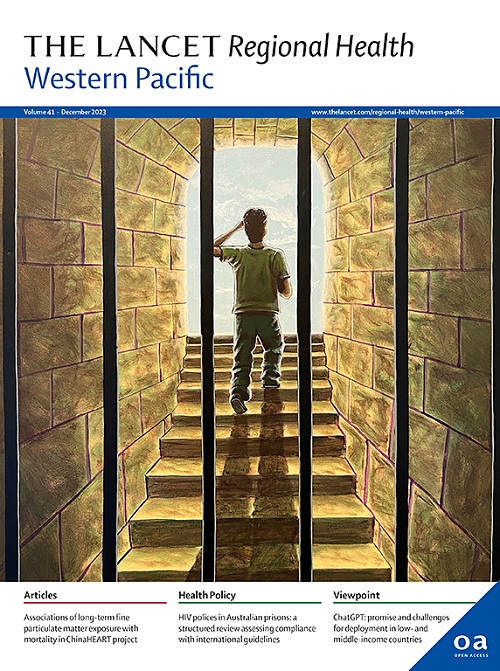1990-2035年外国亲生育政策逆转日本生育率下降:系统回顾和二手数据分析
IF 8.1
1区 医学
Q1 HEALTH CARE SCIENCES & SERVICES
引用次数: 0
摘要
包括日本在内的一些高收入国家采取了支持生育的政策来应对不断下降的生育率。然而,这些政策的有效性在不同的研究和国家中有所不同。本研究旨在进行初步系统审查,以确定扭转生育率下降趋势的有效政策。随后,通过基于场景的二次分析,将其应用到日本的背景中。目标是预测日本到2035年的总生育率(TFR)。方法从各主要电子数据库建立之日起至2025年3月27日进行检索,调查生育政策的影响。我们还从经合组织、世界银行和国际货币基金组织的数据库中提取了1990年至2022年的各种人口和公共支出数据。采用贝叶斯层次回归模型对日本到2035年的总生育率趋势进行了预测和预测,并分析了重大生育政策对这些趋势的影响。我们的分析包括了61项关注亲生育政策的研究,确定了现金福利政策——如生育补贴、津贴、带薪产假和陪产假、托儿保险和免税——是最具影响力的。无薪产假、全面二孩政策和辅助生殖技术健康保险也显示出提高生育率的潜力,尽管还需要进一步的研究。澳大利亚、希腊、匈牙利、法国和英国等国家将其GDP的1.3%以上用于家庭现金福利,而日本和韩国的这一比例不到1%。我们的研究结果表明,日本目前的现金福利政策不太可能在2030年(12%的可能性)和2035年(29%的可能性)显著扭转生育率下降。然而,如果日本到2030年将其现金福利提高到澳大利亚、匈牙利和法国的水平,扭转日本生育率下降的可能性将分别显著上升至79%、70%和69%。即使到2035年扩大现金补贴政策,扭转生育率下降的可能性预计也在60左右或更多。在高收入国家,现金补贴成为最有效的生育政策,尽管在日本,这种补贴明显不高。提高日本的现金福利计划可能会导致更高的总生育率。一桥大学hias Health;东京政策研究基金会,日本。本文章由计算机程序翻译,如有差异,请以英文原文为准。
Reversing fertility decline in Japan with foreign pro-natalist policies, 1990–2035: a systematic review and secondary data analysis
Background
Several high-income countries, including Japan, have adopted pro-natalist policy to counteract declining fertility rates. However, the effectiveness of these policies varied across different studies and countries. This study aims to conduct an initial systematic review to identify effective policies that have reversed declining fertility rates. Subsequently, it will apply them to Japan’s context through scenario-based secondary analysis. The goals are to project Japan’s total fertility rate (TFR) up to the year 2035.
Methods
We conducted searches in major electronic databases from their inception until March 27 2025 to investigate the impact of fertility policies. We also extracted a variety demographic and public expenditure data from the OECD, World Bank, and IMF databases for the years 1990–2022. A Bayesian hierarchical regression model was used to estimate and project Japan’s TFR trends up to 2035 in Japan, analyzing the effects of significant fertility policies on these trends.
Findings
Our analysis included a total of 61 studies focusing on pro-natalist policies, identifying cash benefit policies—such as payment at birth, allowances, paid maternity and paternal leave, childcare coverage, and tax exemptions—as the most influential. Unpaid maternity leaves, universal two-child policy, and Assisted Reproductive Technology health insurance coverage also showed potential to boost fertility, although further research is needed. Countries like Australia, Greece, Hungary, France, and the UK allocate over 1.3% of their GDP to family cash benefits, contrasting Japan and Korea, where the allocation is less than 1%. Our findings indicate that Japan’s current cash benefit policies are unlikely to significantly reverse the fertility decline by 2030 (12% likelihood) and 2035 (29% likelihood). However, should Japan enhance its cash benefits to levels observed in Australia, Hungary, and France by 2030, the probability of reversing Japan’s fertility decline could rise significantly to 79%, 70%, and 69%, respectively. Even if cash benefit policies are scaled up by 2035, the probability of reversing the decline fertility rate is projected to be around 60 or more.
Interpretation
Cash benefits emerged as the most effective fertility policy in high-income countries, although such benefits in Japan were notably modest. Elevating Japan’s cash benefit scheme could potentially lead to higher TFR.
Funding
HIAS Health, Hitotsubashi University; Tokyo Foundation for Policy Research, Japan.
求助全文
通过发布文献求助,成功后即可免费获取论文全文。
去求助
来源期刊

The Lancet Regional Health: Western Pacific
Medicine-Pediatrics, Perinatology and Child Health
CiteScore
8.80
自引率
2.80%
发文量
305
审稿时长
11 weeks
期刊介绍:
The Lancet Regional Health – Western Pacific, a gold open access journal, is an integral part of The Lancet's global initiative advocating for healthcare quality and access worldwide. It aims to advance clinical practice and health policy in the Western Pacific region, contributing to enhanced health outcomes. The journal publishes high-quality original research shedding light on clinical practice and health policy in the region. It also includes reviews, commentaries, and opinion pieces covering diverse regional health topics, such as infectious diseases, non-communicable diseases, child and adolescent health, maternal and reproductive health, aging health, mental health, the health workforce and systems, and health policy.
 求助内容:
求助内容: 应助结果提醒方式:
应助结果提醒方式:


